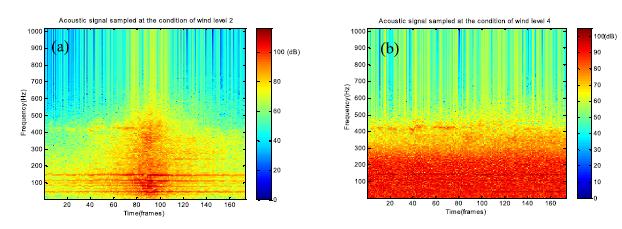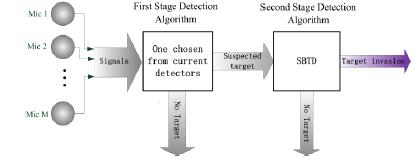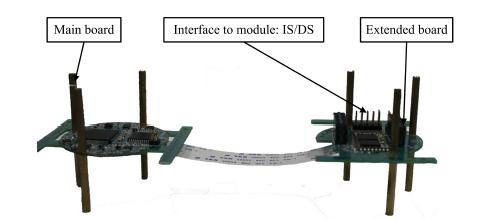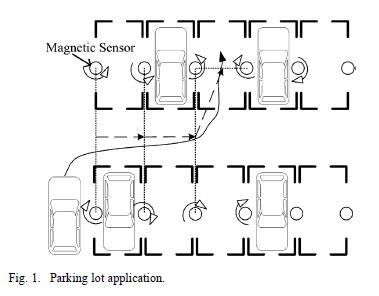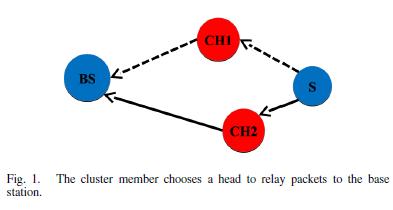-
Design of an Acoustic Target Classification System Based on Small-Aperture Microphone Array
ABSTRACT The acoustic recognition module of the unattended ground sensor (UGS) system applied in wild environments is faced with the challenge of complicated noise interference. In this paper, a small-aperture microphone array (MA)-based acoustic target classification system, including the system hardware architecture and classification algorithm scheme, is designed as a node-level sensor for the application of UGS in noisy situation.
-
A Two-Stage Detection Method for Moving Targets in the Wild Based on Microphone Array
IEEE SENSORS JOURNAL,Feng Guo,Jingchang Huang,Xin Zhang,Yongbo Cheng,Huawei Liu,Baoqing Li
ABSTRACT Target detection is an important issue in the unattended ground sensors. In this paper, inspired by the idea of subspace-based direction of arrival estimation algorithms, a new target detection algorithm called subspace-based target detection (SBTD) is proposed to detect moving targets. The SBTD employs the SNR of the acoustic signals to decide whether moving targets are exiting or not. Although the SBTD has good detection performance, its cost maybe a little high for unattended sensors with low-cost hardware and long-term monitoring. To relieve the cost, we propose the hierarchical detection scheme and develop a two-stage detection method based on the SBTD for target detection in the wild, in which the first stage detection algorithm is chosen from current detection algorithms, while the second stage detection algorithm employs the SBTD.
-
Design of a Direction-of-Arrival Estimation Method Used for an Automatic Bearing Tracking System
Sensors,Feng Guo,Huawei Liu,Jingchang Huang,Xin Zhang,Xingshui Zu, Baoqing Li, Xiaobing Yuan
Abstract In this paper, we introduce a sub-band direction-of-arrival (DOA) estimation method suitable for employment within an automatic bearing tracking system. Inspired by the magnitude-squared coherence (MSC), we extend the MSC to the sub-band and propose the sub-band magnitude-squared coherence (SMSC) to measure the coherence between the frequency sub-bands of wideband signals. Then, we design a sub-band DOA estimation method which chooses a sub-band from the wideband signals by SMSC for the bearing tracking system.
-
A Practicable Method for Ferromagnetic Object Moving Direction Identification
IEEE TRANSACTIONS ON MAGNETICS,Qianwei Zhou,Guanjun Tong,Baoqing Li,Xiaobing Yuan
The direction of a moving target is an important piece of information in many wireless sensor network (WSN) applications, such as in boundary security, traffic flow control, etc. Due to its robustness, the magnetic sensor can be used to detect a passing ferromagnetic object. By using the orthogonality of two perpendicularly placed sensing units in a monomer magnetic sensor, a linear algorithm based on a magnetic dipole model to identify the ferromagnetic object's moving direction is introduced in this paper. It has been successfully applied in real WSN applications to reduce the numbers of nodes, and prolong the lifetime of the network. Both simulation and field experiments show it has strong noise immunity and more than 95% correction rate in direction detecting.
-
A Novel Energy-efficient Cluster Formation Strategy_ from the Perspective of Cluster Members
IEEE COMMUNICATIONS LETTERS,Dongfeng Xie,Qianwei Zhou,Xing You,Baoqing Li,Xiaobing Yuan
ABSTRACT Traditional clustering methods mostly concentrate on how to choose nodes to serve as cluster heads. As for cluster formation, most papers assume that a normal node joins a nearest cluster head. However, this is not an optimal solution to form a good cluster. It is shown in this paper that a cluster member may not response to the advertisement of the closest cluster head but join a farther cluster head in order to achieve better energy efficiency or longer co-alive lifespan. Based on our new observation, a novel cluster formation strategy is proposed. Besides, simulation results also verify the correctness of our analysis.
